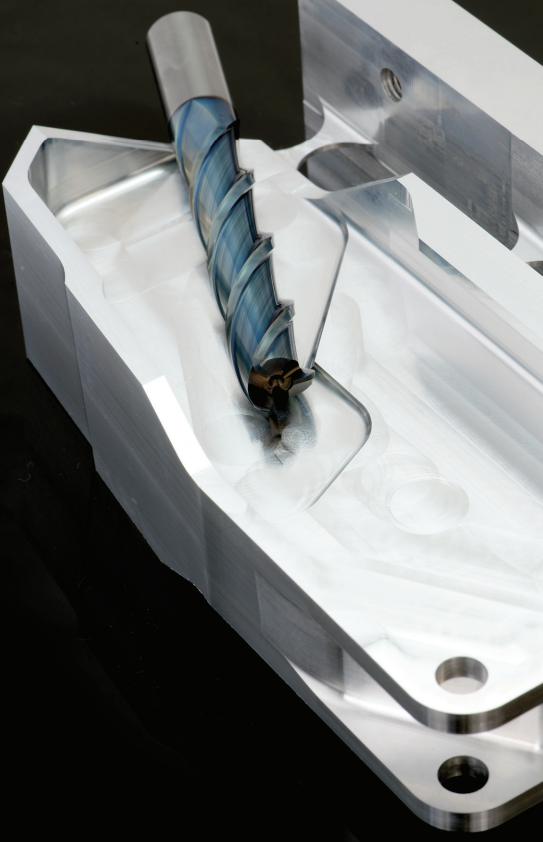Author: Alan Richter
Published: July 2020 - Cutting Tool Engineering Magazine Vol. 72
When a workpiece material is relatively easy to machine and a wide range of parts are made of it, a large number of part manufacturers will machine it. As a result, shops must achieve a high level of productivity to remain competitive, and that’s certainly the case with aluminum alloys.
One cutter doesn’t fit all aluminum machining needs, so end users must work with toolmakers that have offerings across the spectrum.
“Because there are such a high variety of parts that are made of aluminum, you have to have a high variety of tools to serve the market,” said Alyssa Walther, automotive specialist for Irving, Texas based OSG USA Inc., who’s based in Bensenville, Illinois.
Playing Flutes
When milling aluminum, the number of flutes on a tool is critical. Walther said a three-flute tool is common and effective for performing conventional roughing and semifinishing. Two-flute tools, however, provide an added benefit when slotting, deep pocketing and even finishing because their design enhances chip evacuation by providing the most amount of flute space.
“If you have a longer overhang and want a really smooth finish, typically the lower number of flutes will
help reduce the amount of cutting vibration because there are only two points,” she said. “You’re basically indexing the tool 180° apart, so it gives the tool a chance to calm the chatter down.”
Although a two-flute tool is more ordinary for milling aluminum, Parker said LMT Onsrud offers three-flute roughers that help lower the considerable spindle load on a machine.
However, two- or three-flute tools are not the only options when cutting aluminum. Walther said end users performing high-efficiency machining, which generally involves running at high feed rates and taking deeper DOCs (step-downs) and a shallow WOC, are gravitating toward tools with four to seven flutes — or more.
“It depends on what the customer’s style of machining is,” she said.
A Lubricious Layer
To help prevent BUE and extend tool life, Matsumoto said OSG USA can deposit a diamondlike carbon coating on tools for aluminum applications.
“We are trying to reduce the friction so we can avoid chip welding on the tools,” he said.
The coefficient of friction for OSG USA’s DLC coating is approximately 0.1.
Tools that cut aluminum commonly are uncoated. In those cases, Matsumoto recommends much polishing of tool surfaces to combat BUE.
You can view the original article by clicking here




 Contact Us
Contact Us  Product Search
Product Search 